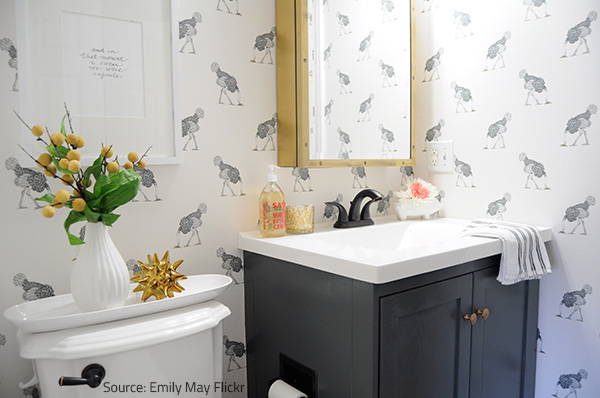What Moisture Causes Bathroom Water Deterioration
WebsiteWhat are your opinions with regards to How to Repair and Prevent Bathroom Water Damage??

Water damage typically happens in the bathroom because of the water used daily. In some cases, the damage could be a little mold from the shower. Other times, it's enormous damage on your floor. Whatever it is, it is constantly excellent to recognize the reason and also stop it prior to it occurs.
This overview will undergo some of the common reasons for water damage in the bathroom. We will certainly additionally analyze what you can do to prevent these causes from harming your shower room. Let's dive in.
These are the usual factors you would certainly have water damage in your shower rooms and how you can detect them:
Excess Wetness
It's amazing to have that lengthy shower and dash water while you hem and haw and imitate you're doing, but sometimes these acts can trigger water damage to your washroom.
Spraying water around can trigger water to head to edges and create molds. See exactly how you spread excess moisture around, as well as when you do it, clean it up to prevent damages.
Cracks in your wall surface tiles
Washroom wall floor tiles have been specially made for that function. They shield the wall from dampness from people taking showers. Nonetheless, they are not unbreakable.
Occasionally, your restroom wall surface ceramic tiles crack as well as permit some moisture to permeate into the wall. This can potentially ruin the wall if you don't take any kind of action. If you observe a crack on your wall floor tiles, fix it right away. Do not wait until it damages your wall.
Overflowing commodes and sinks
As people, occasionally we make mistakes that might create some water damage in the bathroom. For example, leaving your sink faucet on can cause overflowing as well as damages to other parts of the restroom with wetness.
Additionally, a faulty commode can cause overflowing. For instance, a busted commode handle or other parts of the cistern. When this occurs, it could damage the floor.
As soon as you discover an overruning sink or commode, call a plumber to help handle it promptly.
Ruptured or Dripping Pipes
There are many pipes carrying water to different parts of your restroom. Some pipes take water to the bathroom, the sink, the taps, the shower, as well as several various other areas. They crisscross the tiny location of the washroom.
From time to time, these pipes might get rusty and ruptured. Other times, human action might create them to leakage. When this happens, you'll find water in the corners of your shower room or on the wall surface.
To detect this, watch out for gurgling wall surfaces, mold and mildews, or mildew. Call a specialist emergency situation plumbing professional to repair this when it takes place.
Roofing Leaks
Sometimes, the trouble of water damage to the washroom could not originate from the restroom. For example, a roof leakage can trigger damage to the restroom ceiling. You can spot the damages done by considering the water spots on the ceiling.
If you discover water spots on your ceiling, inspect the roofing system to see if it's harmed. After that, call an expert to help address the concern.
Final thought
Water damage to your shower room can be frustrating. However, you can manage it if you avoid some of the reasons pointed out in this guide. Call a specialist emergency situation plumbing if you notice any kind of extreme damage.
How to Prevent Water Damage in Your Bathroom?
Water damage repair is an expensive, meticulous, and lengthy process. Unfortunately, bathrooms are the most susceptible rooms to water damage due to toilets, showers, and sinks. Pipes and fixtures wear out over time and are not immune to damage. But all is not lost, as there are ways to prevent water damage from occurring in your bathroom.
Check Your Plumbing
Nothing lasts forever, especially pipes, which can rust and begin leaking over time. You should periodically conduct pipe inspections and pay attention for any musty smells or water stains that may indicate you need water damage repair. Here are some things to check:
Frequently test valves for your toilet, shower, and sink to ensure they are properly working. Check faucet supply lines hidden under vanities and replace when needed. Replace cracked or deteriorating caulking along sinks, tubs, and showers. If you notice a clog in your sink, call in a professional. Since you can’t check the pipes in the wall, keep an eye out for stains, drywall bubbling, musty smells, and excess moisture; if the bathroom is on a second level, check the ceiling of the room directly below for these signs. Don’t Overwork Your Toilet
One of the most common reasons bathrooms need water damage repair is due to overflowing toilets. Save yourself the hassle of cleanup by being mindful and not pushing your toilet to extreme limits. If you have young children, it is especially important to keep an eye on them when they are in the bathroom and to teach them how to avoid clogging the toilet. Here are some more tips to help prevent your toilet from overflowing:
If you have a septic tank, only use septic-safe toilet paper Do not flush anything down the toilet besides toilet paper; items like diapers and sanitary napkins will clog the piping Pay attention to your toilet’s water level: If it’s low, it could mean it is partially clogged or that there is a crack in the toilet bowl https://www.alure.com/home-improvements-blog/resources/how-to-prevent-water-damage-in-your-bathroom

We hope you liked our piece about How to Repair and Prevent Bathroom Water Damage?. Many thanks for finding the time to browse our content. Sharing is good. Helping people is fun. Thank you for your time spent reading it.
Fast and effective, call!